Learn how to plan your daily routine to get organized, ease transitions, increase productivity, keep your household, business, or classroom running smoothly; find the time for self-care and the freedom to do what you love with a daily rhythm!
A daily rhythm is a daily routine or schedule that can create a powerful framework for your day. Follow a strong daily routine to increase productivity, help your children thrive, and find the time to do the things you have always dreamed of.
It is more than likely that you and your family have some routine that helps you get through the day. If not, odds are you are desperate to create systems that work, and that is why you have found yourself here. Another term for creating a daily routine is time blocking. Time blocking is a time management system that divides the day into blocks of time, similar to how a rhythm or daily routine does.
Create a daily routine and weekly rhythm to give structure to your day, increase the “peace” at home, and get things done. When you allow your daily rhythm to carry you through your day, good habits will become a way of life, and you will learn how important the power of routine is in the home.
Related: 10 Reasons to Make Rhythm and Routine a Habit
What is a Daily Rhythm?
A daily rhythm is a flexible form of time management that directs your daily and weekly routines and tasks. Following a strong daily routine can increase productivity, help children thrive, and free up space in your schedule for the things that matter most.
Following a daily rhythm is a lot like following a schedule without so much rigidity. A daily routine with the “right rhythm” allows for change and flexibility where a minute-by-minute schedule falls short. A powerful daily routine can also help you find the time for self-care and the freedom to do the things you have always dreamed of doing.
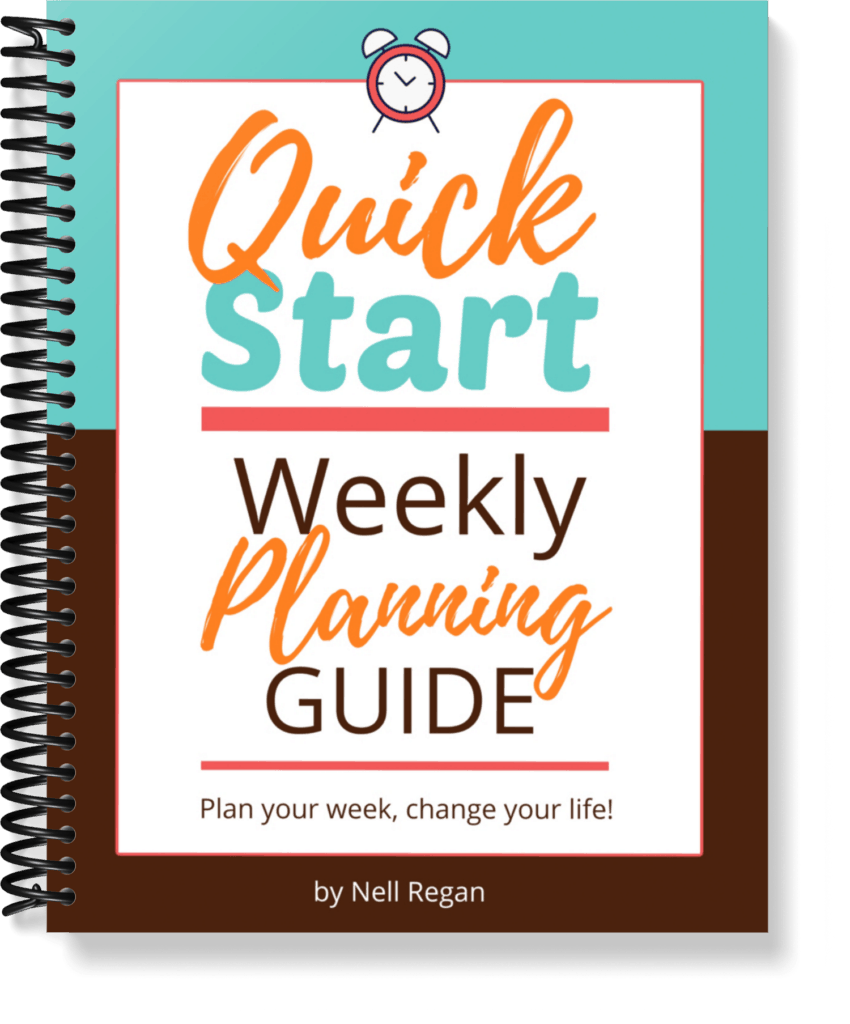
Ready to put the to-do list on autopilot?
Learn how to create rhythms and routines that keep everything in order and help the whole family THRIVE. Opt-in below, and we’ll send the QuickStart Guide straight to your email inbox!
How to Plan Your Daily Routine: Time Blocking 101
Use the step-by-step instructions listed below to learn how to time block and plan your daily routine. Ease transitions, get organized, increase productivity, and keep your household, business, or classroom running smoothly with an effective daily routine.
The main idea is to create systems that turn your most important tasks into daily habits to increase productivity and get things done. Building routines with a robust rhythm ensures that we don’t waste our time or perform actions of no value.
Ready to get started? Get out a piece of paper, open up a new document, or grab your FREE daily and weekly planner HERE–> Quick Start Weekly Rhythm Planning Guide!
Step 1 – Write Down Current Daily Rhythm or Routine
Start by doing a brain dump and writing a list of everything you currently do or would like to fit into your daily rhythm and weekly routine on a blank sheet of paper. Get everything dancing around in your head written down. This list can include current systems, daily and weekly chores, morning and evening routines, regularly occurring appointments, time for work, fitness, running errands, completing projects, family activities, self-care, and playtime!
Related: How to Use the Power of Habit to Change Your Life
Step 2 – Establish Anchors or Main Points of Daily Rhythm
Establish the main points, or anchors, of your day. These main anchors can be mealtimes, the start and completion of your workday, nap times if you have small children in the house, before and after school, etc.
The idea is to use the main actions that you repeat daily as the anchors or systematic parts of the day that you plan everything around. Many people like to separate their day with breakfast, lunch, and dinner, while others prefer to divide their day before school or work, during school or work, and after school or work.
If you have downloaded our Quick Start Weekly Planning Guide, you will see that we have provided both a FREE Daily Rhythm Planner and a Weekly Rhythm Planner for your use, along with our Weekly Planning Roadmap. The printable weekly planner has shaded spaces intermixed within each day. These make it easy to write in the anchor or transition points you prefer to use throughout each day.
Make copies, use heavyweight sheet protectors or dry erase pockets or laminating sheets, and a laminator to make a weekly planner that you can reuse with wet-erase markers. We prefer wet-erase markers to dry-erase markers because they don’t rub off as you write and are just as easy to clean with a cloth and a little water.
Step 3 – Add “Right Rhythm” Into Your Daily Routine
Rudolf Steiner, the founder of Waldorf education, spoke of rhythm as flowing with the breath. He said that the “right rhythm” is a balanced combination of activities where we breathe in or inhale and breathe out or exhale.
As a yoga instructor, I resonate with the idea that our daily routine should flow with our breath as we move from task to task. When we inhale, we immerse ourselves in internal or “being” activities. And when we exhale, we are primarily engaged in external or “doing” activities.
In other words, our daily rhythm should follow periods of expansion–breathing out–where we relate to the external world with periods of contraction–breathing in–where we refer to the inner world, or ourselves.
Too crunchy for you?
The take-home is this. When you create your daily routine and weekly rhythm, you want to alternate between “being” and “doing.” In other words, follow expansive or energetic activities with relaxing activities and support these quiet periods with busyness.
How does following a “Right Rhythm” Help?
Right rhythms can help you use to power of habit to change your life.
When you perform active high energy activities or passive low energy activities at a similar time each day, your body, mind, and spirit will all be prepared for the task at hand; whether it is taking the dog for a walk, doing chores, running errands, eating lunch, meeting with an important client, or going to bed for the night.
There is no need to alter being and doing with every small step that you take. The idea is not to spend too much time at either extreme. Make sure your day flows between “being” and “doing” by alternating relaxing self-nurturing activities such as meditation, yoga, arts and crafts, eating, and spending time in nature, with external high energy activities such as working out or competing to do’s, errands, and chores.
Over time creating systems with the “right rhythm” can develop good habits and a powerful daily routine because it will prepare your mind and body for the type of task you have planned for each moment of your day. This is how you choose to create the life of your dreams… One habit, system, or goal at a time.
Related: 10 Reasons to Make Rhythm a Habit
Step 4 – Write Your Daily and Weekly Routine in your Weekly Planner
Use your planner to create systems for success. Start by writing down your basic daily rhythm and weekly routine. Creating a daily rhythm is similar to time blocking, with the addition of transition points that anchor positive habits, give the day structure, and help it flow. Assign the spaces before and after the anchor points in your day to complete specific tasks (chores, errands, work, exercise). The idea is to have most of these tasks, excluding singular appointments and events, repeat every week.
Design daily routines and weekly rhythms to make our most important tasks into daily habits to increase productivity. Creating reliable systems and following a regular rhythm ensures that we don’t waste our time or perform actions of no value. Learn more about combining daily systems and weekly rhythms into one big harmonious whole in household rhythms.
Psst… If you decide to use our free weekly rhythm planner and prefer to use breakfast, lunch, and dinner as your daily anchors, you can also use your weekly planner as a meal planner. How fun and easy is that?! Just write the meals that you would like to prepare down in the corresponding spaces.
Related: How to Create an Action Plan to Achieve Goals
Step 5 – Go With the Flow: Finding Rhythm in Routine
I like to think of a rhythm as a series of routines and tasks combined in a harmonious flow. Once it’s there, you let your day unfold around it, allowing your daily rhythm to carry you as you quickly move from task to task. The primary goal is to turn everything you do daily and weekly into a habit that you no longer have to think about executing.
When you no longer have to think about what you need to do next, you will efficiently complete your daily goals. This simple task can free up the space required to do the things you have always dreamed of fitting into your schedule!
When you create your daily rhythm and weekly routine, you are establishing one long daily and weekly system or habit. Take your time, and do your best not to get discouraged. It takes time and effort to establish new habits. Once your most important daily systems and routines become a daily habit, they will support you even on the most challenging days. You may not know what to do next, but your rhythm will.
Just stay calm and go with the flow. You’ll know when you have found your groove when you move smoothly through your day without having to look at what comes next or think about your next activity–this is true freedom!
What is a Waldorf Daily Rhythm?
A Waldorf daily rhythm is a daily routine that flows through the elements of Waldorf education in a rhythmic weekly fashion. Establish a Waldorf daily rhythm in your home, daycare, or classroom to educate your children, ease transitions, feed the kids, get the chores done, find the time to connect with your family, and still have time for self-care!
Once established, you can continue to use your daily rhythm as the framework that carries you through your day as you effortlessly flow from task to task. Visual Routine Cards are an excellent tool to assist children with their daily rhythm. Below you can see an example of a basic daily routine… our Waldorf daily rhythm!
Related: How to Set Positive Affirmations to Achieve Goals
Daily Routine Example: Our Daily Rhythm
We don’t follow this exact daily rhythm minute by minute every single day. There are many variants in our day-to-day routines and household rhythms, but this generally follows that as we flow from task to task. Of course, some days flow more smoothly than others. Life isn’t always filled with butterflies and rainbows, but following a Waldorf daily rhythm can help the smooth days become more frequent over time.
Update: Since our daughter has formally entered Waldorf education (which we highly recommend), our daily rhythm has changed entirely. And it has continued to change several times over because of the ever-changing status of the pandemic of 2020 and now 2021. Continuing to flow within the mutable structure of our daily and weekly rhythm has made the survival of my sanity possible. I don’t know what my family would do without our daily rhythm!
We used a daily routine similar to the one shown below when we ran a home daycare and homeschooled our daughter during her preschool years. We have updated the image and schedule slightly since that time. This daily rhythm can be used and adapted by homeschoolers with children of all ages. Working with rhythm and routine makes it easy to shift the different elements of your day around to allow for seasonal changes and daily differences. Exchange this with that, or move this from here to there, and that from there to here, and you will be good to go!
Daily Rhythm Ideas for Kids and Families
You can find all kinds of fun ways to get through your day on Rhythms of Play–it is one of the primary reasons we exist! A few of our favorite daily activities, family recipes, and book recommendations are listed below to get you started:
- Kids Yoga: Tips on Getting Started
- Apple Pie Oatmeal
- How to Raise a Helper
- Forest School: Outdoor Learning Ideas and Nature Activities
- Art and Craft Ideas
- Books That Teach Kids Important Life Lessons
- Read Aloud Fairy Tales and How They Benefit Development
Related: Using the Power of Rhythm to Get Organized for Good
Plan your Daily Routine and Weekly Rhythm
Creating daily and weekly routines and household rhythms can help make it easier for parents, caregivers, and educators to get through each day. I encourage you to create freedom within the structure of your day with a daily routine and weekly rhythm that works for you and your family. Establish a daily rhythm or routine in your home (or classroom) to ease transitions, increase productivity, and get organized for good!
Learn More About Rhythms and Routines
- 10 Reasons to Make Rhythm and Routine a Habit
- Organize Your Life with the Power of Rhythm
- 7 Reasons to Add the Color of the Day to Your Daily Rhythm
- Household Rhythms and Routines
- Visual Routine Cards for Kids
Learn more about Rhythms of Play HERE!
More Information About using a Waldorf Daily Rhythm and Weekly Routines for Parents and Caregivers:
I learned about the power of rhythm during my studies in psychology, adventures as a nanny, educator, and coach, from well seasoned Waldorf educators, and within the pages of great parenting books such as those mentioned within the posts listed below.
- Favorite Parenting Books for Raising Kids Zero to Five
- Positive Discipline Books for Parents and Educators.
And, here is another great Waldorf daily rhythm resource–>Daily Rhythm at Home and its Lifelong Relevance by Helle Heckmann.

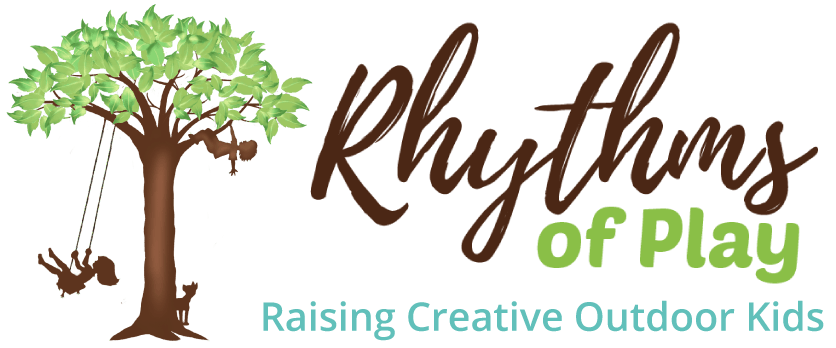
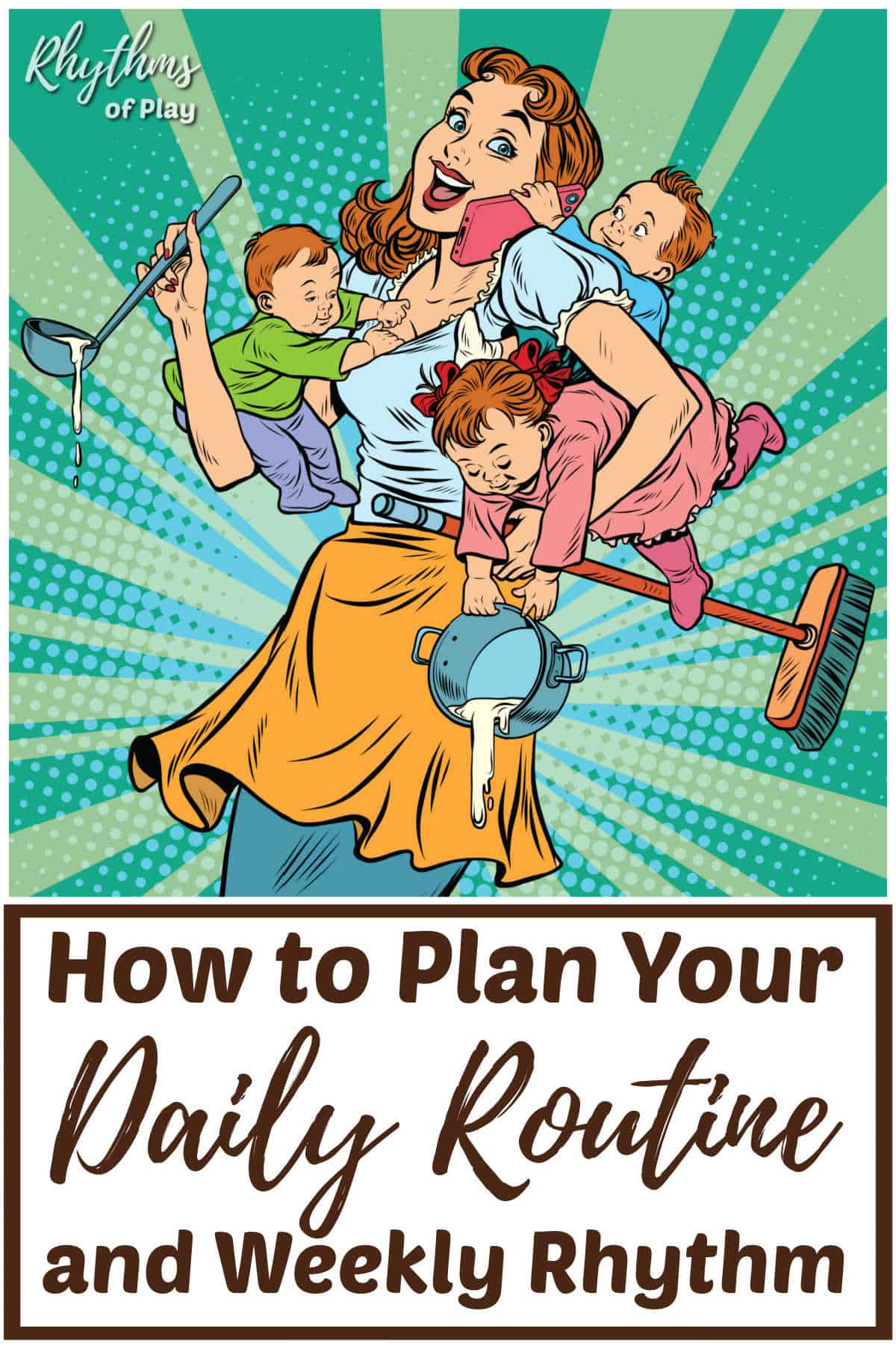

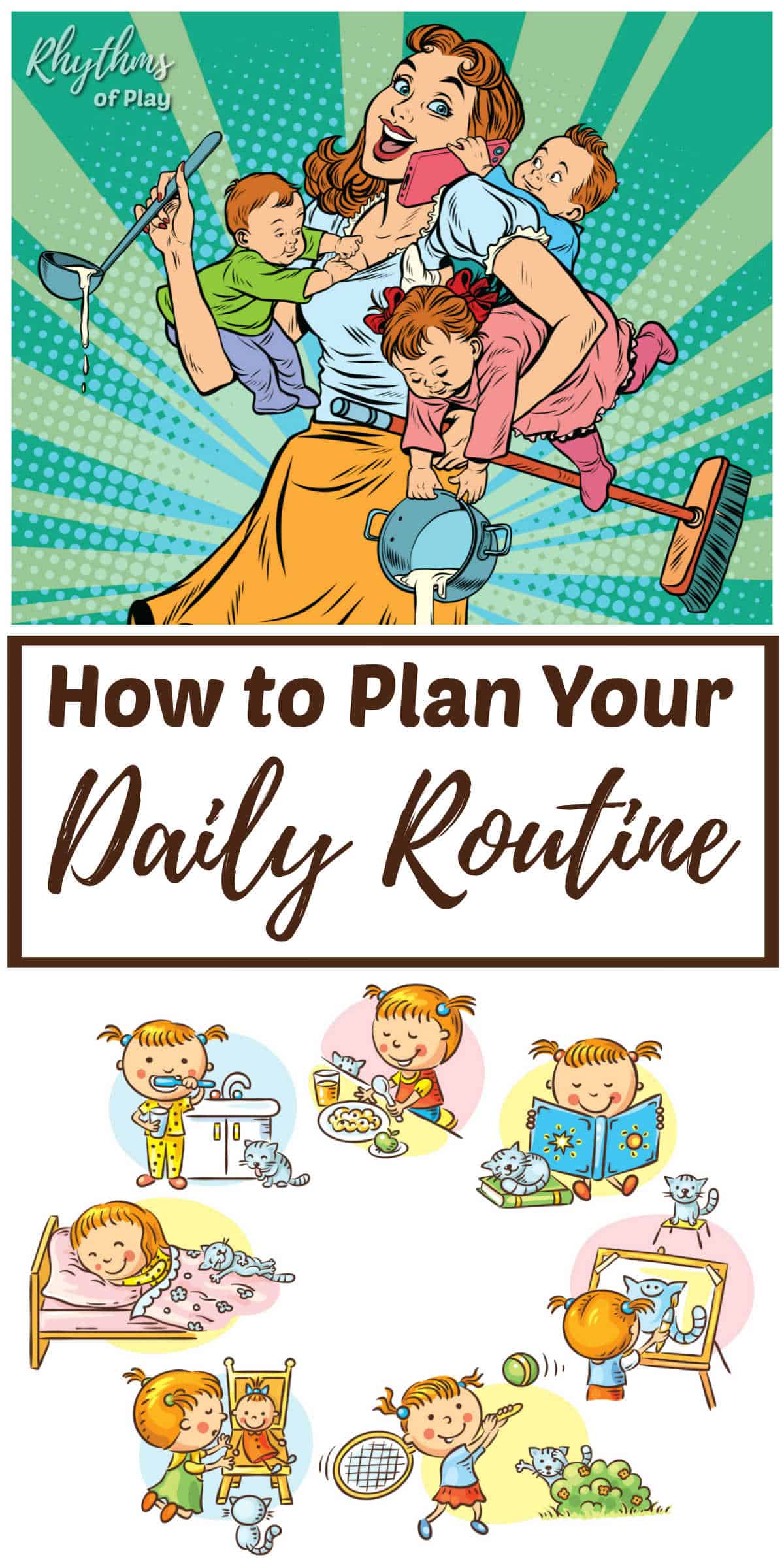



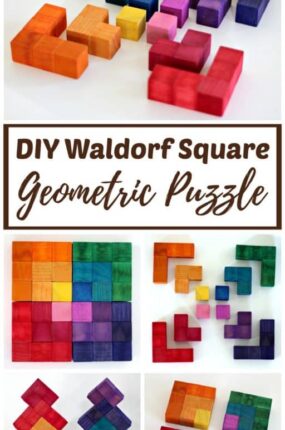

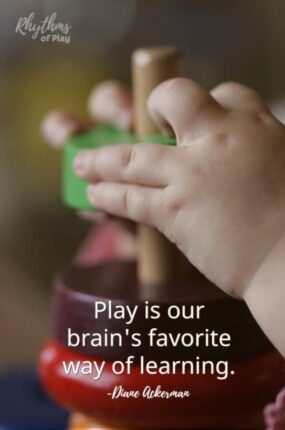
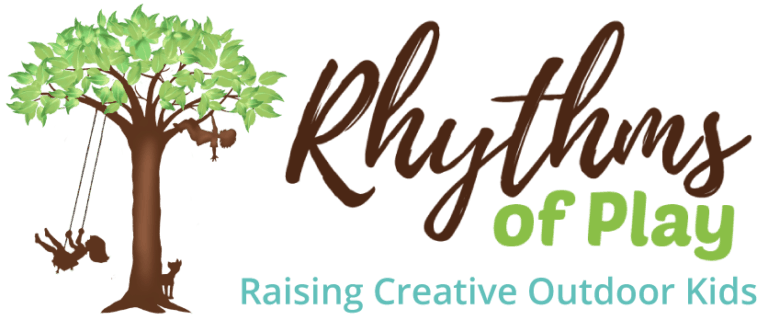
I find a routine or rhythm so important. December was a roller coaster for us with some medical concerns, Christmas, and then all of us getting a horrible cold. It threw off that rhythm. As we are getting back into it, I’m noticing it helping my daughter get back to normal napping, better behavior, etc. I just feel more normal and calm when our days flow.
(visiting from the Mom 2 Mom Mondays link up)
I too find rhythm so important in our daily lives. Whenever we fall out of rhythm our life gets so chaotic leaving me feeling overwhelmed and out of control. Challenging events and big changes have the capacity to throw us all off course, but I find that getting back into our rhythm is the best way to pull ourselves together quickly. Thanks for visiting! Come back anytime 🙂
I like creating my own rhythm.
Glad to hear it Betty! Have you found it helpful so far?
Great work.
Thank you! So glad you found this resource useful 🙂
My daughter teaches children Art and handicraft for 3 hours every saturday morning.I assist her and we are constantly looking for craft activities with a difference.Cannot wait to see what you suggest,Yours Patricia Holt
That’s wonderful Patricia! You can find lots of fun ideas under “Arts and crafts” and we have a few others under “DIY.” You can also sign up for my newsletter to receive all the little extras, and get notified when we have new ideas. 😉
hello,
i’m french and teacher.
i love your creations… they inspire me a lot!
Thank you
Thank you so much Santana! So glad you enjoy our creations!
Köszönöm!
Thank You so much!!
You’re welcome, Maya!
I am a single mom of 3 small children. Our weekdays are pretty well scheduled and balanced but our weekends seem to be all over the place. I always feel like a failure because I am trying to be so structured on weekends and it never works our. I actually think instead of structure and schedule I need to be more flexible with how things happen in the weekends. The weekends for us are unpredictable so I think I freak out when the house doesnt get clean Saturday because we have to attend a birthday party and its hard for me to be flexible with doing it Sunday. I think I need more flexibility vs schedule and structure.
Hi Kim, I have had a similar struggle on the weekends for completely different reasons so I get it. I’m a bit confused though… Have you already tried turning your weekends into more of a rhythm and it’s still too structured? Or are you saying that you can’t wait to loosen the reigns a bit with a rhythm instead of schedule?
Cesar Avila Here
Awesome, I was looking for this for ages, Thank you so much
You are welcome, Cesar! I’m so glad that you have finally found what you have been looking for. Creating a strong rhythm has helped us immensely… let me know if you have any questions.
The article is helpful but the ads on this page are excessive and make it overly cluttered and difficult to read.
Hi Diana,
I’m so glad you find the information about creating a weekly rhythm or routine useful. The ads help me keep the information free to readers, but I hear you. It is a bit excessive. I will ask the ad team to dial it down a bit. Thanks for understanding.
Nell